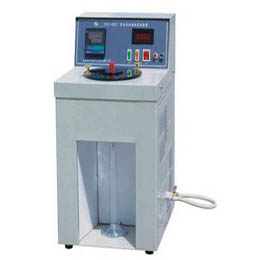Product Name:
SYD
-
0621
Asphalt Standard Viscometer
Application and Usage of the Asphalt Standard Viscometer:
According to the industry standard set by the Ministry of Communications
T0621
The specification outlines how to determine the viscosity of liquid petroleum asphalt, coal pitch, and emulsified asphalt in a flowing state. It is suitable for measuring the viscosity of viscous petroleum asphalt, liquid petroleum asphalt, and soft coal tar pitch with low consistency. The viscosity is measured as the time it takes for the sample to flow through the drain hole of the standard viscometer at a specified temperature.
50ml
The time required to
S
Indicates the viscosity measurement, which is used to classify the sample.
How to Use the Asphalt Standard Viscometer:
Before use, check that all parts are functioning properly. Ensure the water tank is clean and free of obstructions in the oil tank hole. Follow these steps for testing.
1. Fill the water injection funnel, making sure the water does not exceed the engraved line.
2. Remove the oil sump cover.
3. Select the appropriate diameter of the oil drain hole based on the test asphalt's specifications and markings.
4. Use a metal lever to block the drain hole.
5. Take the asphalt sample, melt it, and pour it into the oil tank.
6. Cover the oil cup.
7
Set the temperature according to the requirements of the asphalt. Press and hold the ↑ or ↓ button until the displayed temperature matches the set value. Turn on the power and start heating. Once the temperature stabilizes, turn on the stirring function.
1
–
3min
. Lift the ball plug and use the mark to hang on the side of the sample tube. Wait for the sample to flow into the receiving bottle or measuring tube.
25ml
(measuring cylinder scale
50mL
), take the time when the sample flows out
75mL
(measuring cylinder scale
100mL
), then stop timing. The elapsed time for the sample to flow out
50mL
is the viscosity of the sample. For detailed procedures, refer to the Ministry of Communications industry standard
JTJ052-2000
middle (
T0621
–
93
) experiment.

